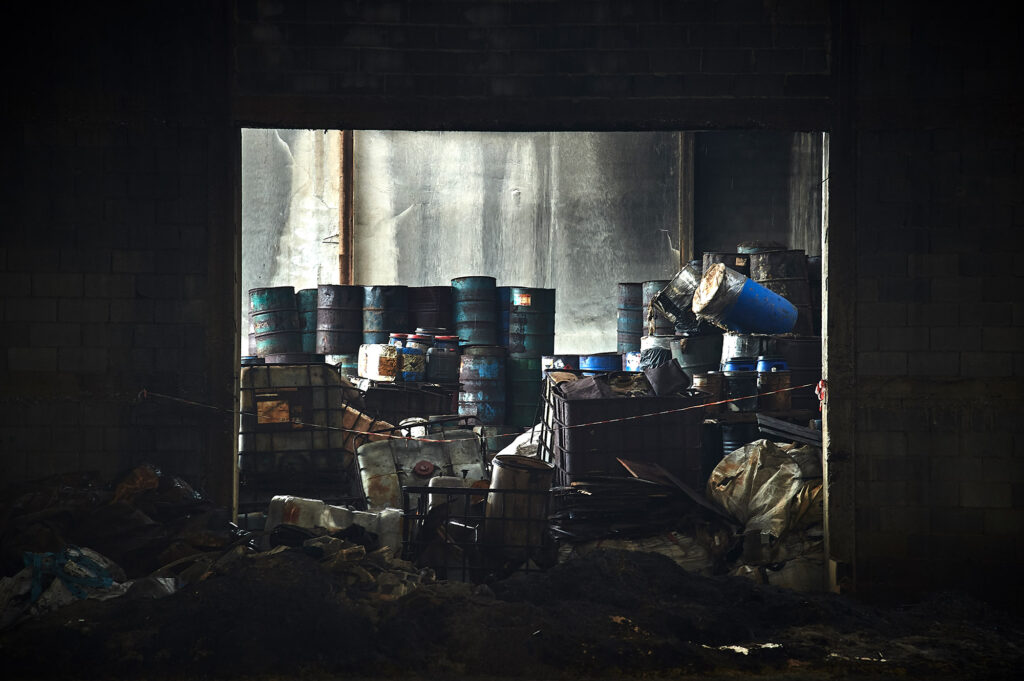Waste management experts suggest regulators come up with a roadmap to facilitate the formulation of new laws and regulations so that they can have sustained mechanisms to help regulate the hazardous waste management industry more efficiently and comprehensively in the long run …rather than fixing the bugs at hand
The Department of Industrial Works Department (DIW) and Industry Ministry’s representatives have updated the statuses of legal proceedings and clean-up efforts at Aek UThai recycling plant in Ayutthaya province and nearby warehouses and subsidiary plant, which they aim to use the case to solidify a new direction of legal proceedings against those committing environmental crimes against the environment.
In an attempt to go beyond the current legal limitation, the DIW’s investigator and specialist engineer from the Industrial Waste Management Division, Warit Somsong, briefed the press during the Toxic Tour organised by the department and EARTH Thailand that the department has been working with concerned agencies including the Department of Groundwater Resources and the Pollution Control Department in gathering and wrapping up information regarding the spread of the toxic waste from the compounds to the environment especially aquifers and irrigation canals which are public properties.
The information, he said, will be used to lay the grounds for criminal charges under the Criminal Code, Sections 228 and 237. Section 228 states that whoever acts in any way to cause flooding or to disrupt use of water, which is a public utility, he or she shall be liable to imprisonment not exceeding 5 years or a fine not exceeding Bt 100,000 baht if such action is likely to cause harm to another person or his or her property. And if the offence as stated in the first paragraph has caused harm to another person or his or her property, the offender shall be liable to imprisonment from 6 months to 7 years and a fine from Bt 10,000 to 140,000.
Section 237, meanwhile, states that whoever poisons water sources designated for public consumption to the point that it’s likely harmful to public health shall be liable to imprisonment from 6 months to 10 years and a fine from Bt 10,000 to 200,000.
Mr. Warit said that the department previously based charges against violators on two main acts: The Factory Act, B.E. 2535 (1992), and the Hazardous Substance Act, B.E. 2535 (1992). Both rely heavily on administrative orders and carry penalties of a two-year jail term at most and a fine up to Bt 200,000, the legal consequences of which are far less than those placed under the Criminal Code. The charges under the Criminal Code, he added, will also pave the way for civil proceedings simultaneously, as facts found under the criminal charges can be applied to the cases.
“They were the first properties that we tried enforcing the laws thoroughly and with other laws available, but have lagged a bit behind other places, including Win Process in Rayong, due to legal complications.
“…Pollution cases should not end with just an administrative order or a fine, and violators then leave without any criminal records. People said they are not like killings, but what if we think that their consequences and death threats can be foreseeable? (Shall they not be charged with severe criminal proceedings?)” asked Mr. Warit.
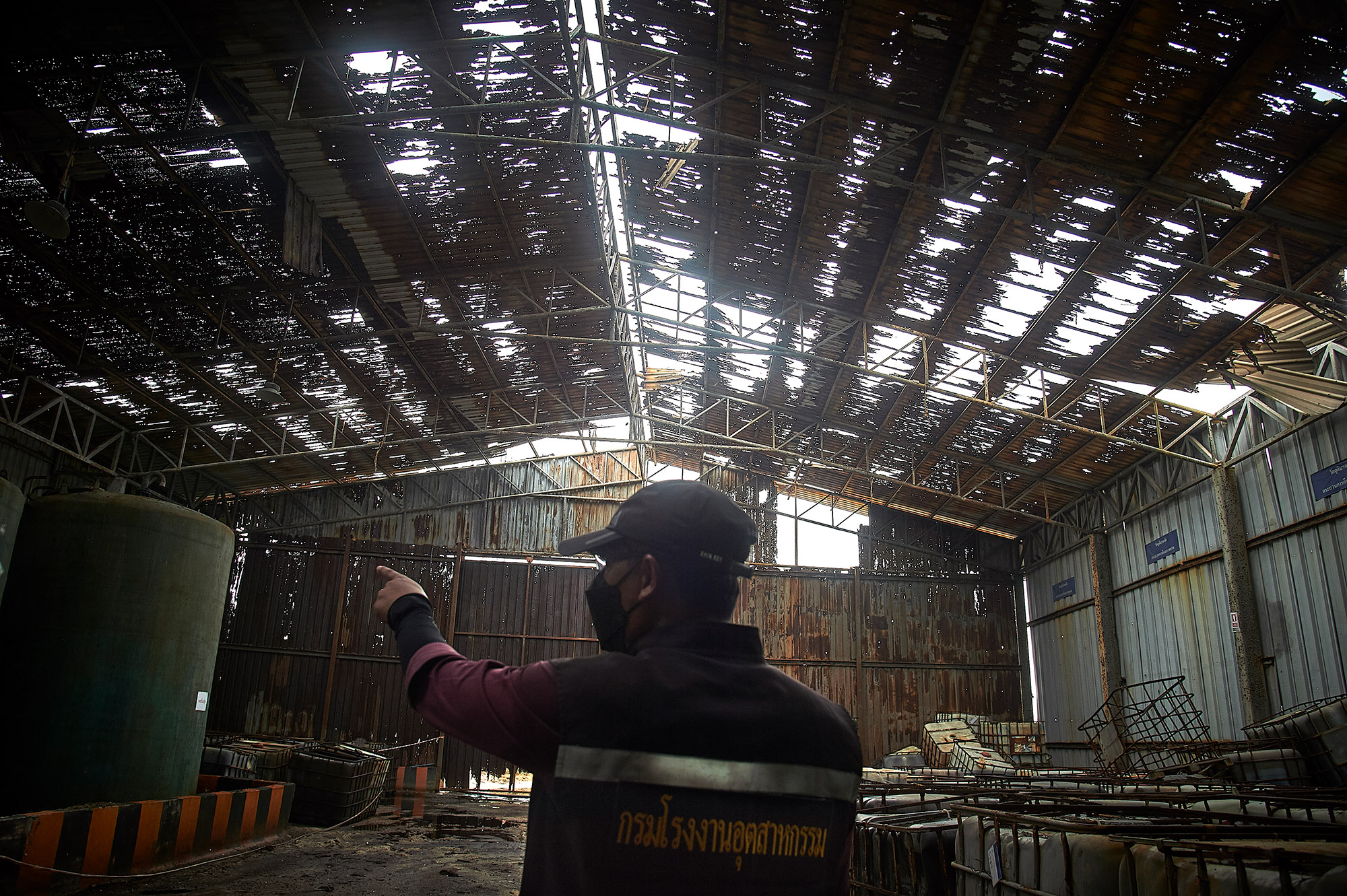


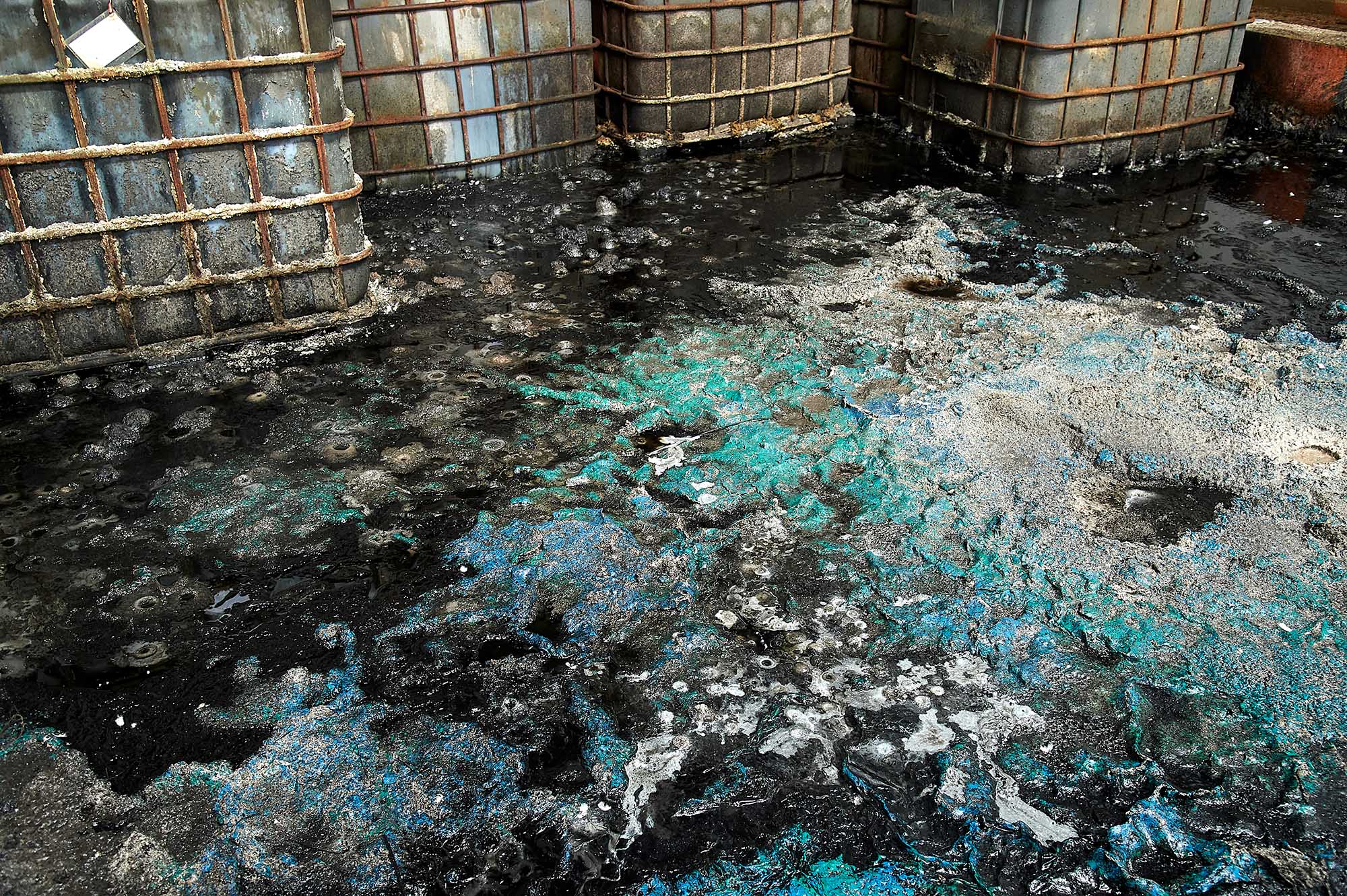
Photos: Sayan Chuenudomsavad
Aek UThai’s network
Aek UThai was back in the public attention as a major fire broke out at Win Process, a recycling plant in Ban Khai district in Rayong province last April. The investigators of the department traced their connection and found some grounds as they shared executives, especially Mr. Opas Boonchan, who was sentenced to five years in prison in February. He was accused of possessing hazardous materials and leaking chemicals into public watercourses under the Aek UThai legal proceeding model. He died shortly after the imprisonment due to his chronic diseases, leaving legal embattles to be continued at the Win Process.
Aek UThai recycling plant in Uthai district and its warehouses in nearby Phachi were first reported to the department in 2023 when the residents noticed traces of chemical waste falling from trucks onto the road. They reported to the department, which later sent its investigators to investigate the sites and found that these properties were among the country’s largest illegal hazardous waste management networks.
Aek UThai (Uthai Branch) had 105 and 106 permits that allowed it to dispose of and recycle non-toxic and toxic hazardous waste, respectively. The plant was reported to have been operating in the community for more than ten years despite the residents’ complaints. In late 2023, the department issued an order to suspend its operations as the plant did not improve its operations. Worse, it still disposed of toxic waste both inside and outside the compound, which was next to the residents’ ricefields and orchards as well as public irrigation canals.
So, the department decided to seize all equipment and chemical materials inside, and three months later, it decided to revoke its permits and take legal proceedings against it. The case is now with the police and is about to be forwarded to the prosecutors. They are asking for information regarding the harm to the environment to proceed with the case, according to Mr. Warit.
At its warehouses, the department had also seized the whole compound and all equipment and chemical materials inside. The rented compound comprises five separate warehouses full of bulk containers containing acidic solvents and unknown chemicals similar to its plant in Uthai district. Following the investigation, the investigators found another subsidiary plant nearby, Suntech Chemical and Logistics company, which was full of hazardous waste in containers and waste paper and plastics. They then expanded their investigation into other branches of Aek Uthai in Klang Dong district in Saraburi province and Sri Thep district in Petchabun, and found they were all connected through their executives.
Not only did these factories illegally dispose of hazardous waste deemed harmful to water sources and the environment nearby, but the investigators also found that they were run in a similar pattern: buying permits from old factory owners but did not pursue the business as permitted.
According to the investigators, these recycling plants simply took the waste from factories elsewhere and stored or dumped it underground, both inside and outside their compounds. Some materials were found concealed, and their actual amount remains unknown. As they were exposed, a series of major fires broke out here and there, including at Win Process and the warehouses in Phachi. In one incident in Phachi warehouses in February last year, the investigators and the police managed to identify that it was arson. In mid-last year, the fire then broke out again at Warehouse Nos. 3 to 5.
Some waste management operators said the business is highly lucrative because operators of this dirty business barely shoulder the costs of actual waste processing, as they simply dump the waste somewhere. For instance, to process acidic solvents, the actual price per tonne could stand between Bt 7,000 to 20,000 if processed properly, but these operators would cut costs to Bt 2,000 per tonne.


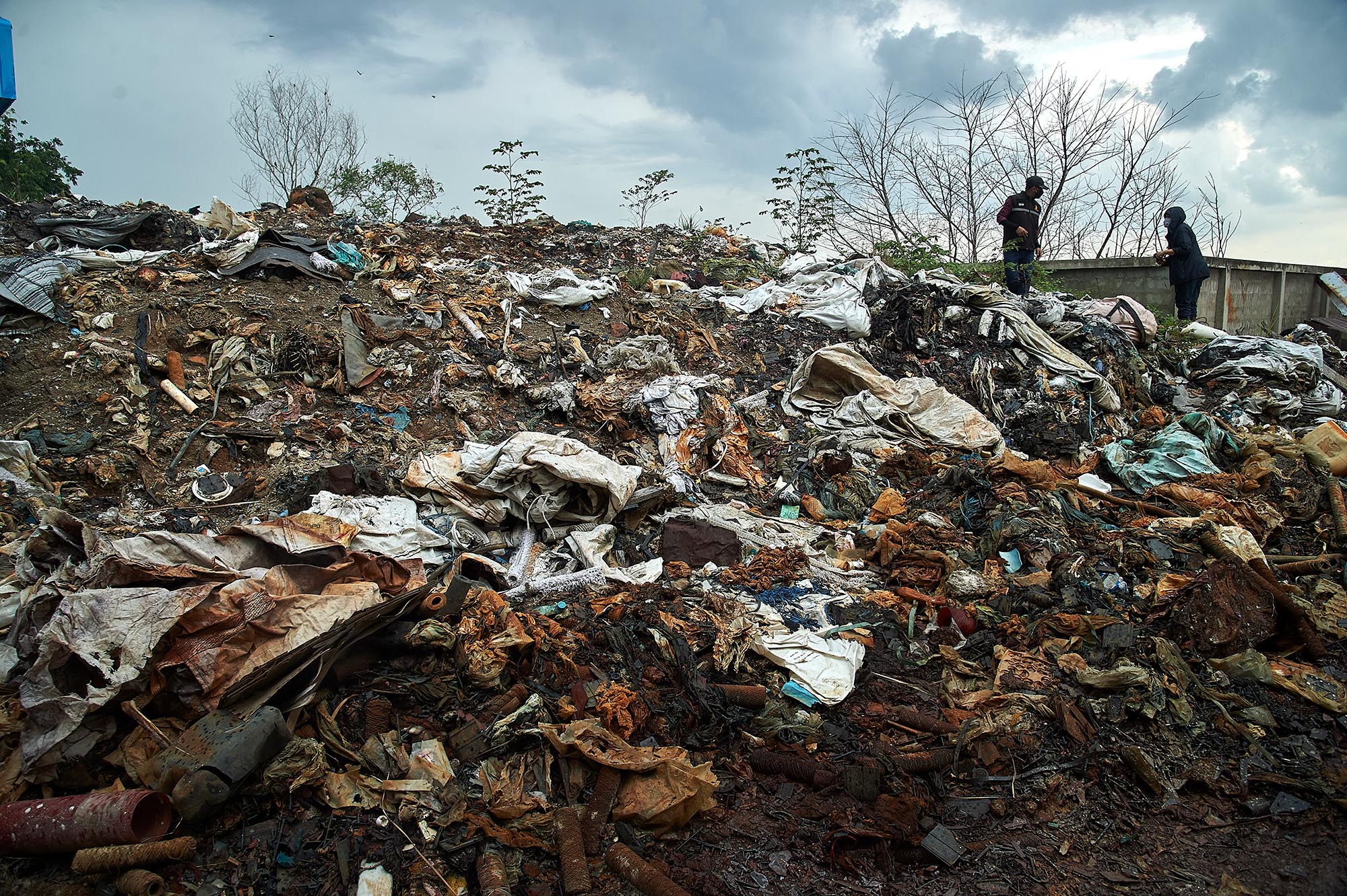
Photos: Sayan Chuenudomsavad
So far, the department has disbursed the state budget to clear the mess. It has managed to clear merely around 400 tonnes of acidic solvents at the Aek UThai recycling plant, leaving around 7,000 tonnes to be cleared, plus an unknown amount of toxic waste believed to be buried underground inside and around the compound. At its warehouses, the PCD ever estimated that around 4000 tonnes of toxic waste were stored there, and the department has managed to clear only around 1,000 tonnes, leaving 3,000 tonnes more at the compound to be cleared. The work is pending the new budget sums to be approved by the government, the department’s officials said.
(Also read: Risk of toxic leakage and contamination remains at Win Process: PCD)
Fixing a loophole
Thitipat Chotidechachainan, head of the Industry Ministry’s “Sud-Soi” industrial crime suppression task force, said the ministry has realised the growing problem of hazardous waste and tried to suppress it. It has recently introduced a new work model at Samut Sakhon province, which is among the country’s industrial concentration areas, to try to screen out illegal factories, including hazardous waste management plants.
Under the model, the NEB’s provincial panel, chaired by a Governor, will be activated for the task. It will act as a focal point, comprising provincial officials concerned as well as representatives from local administration organisations. It will check all factories operating in a province and screen out illegal factories for further proceedings, including legal enforcement, Ms. Thitipat said.
The ministry is currently drafting a ministerial regulation for other provinces to follow. This, she said, will help identify and suppress illegal factories in operation.
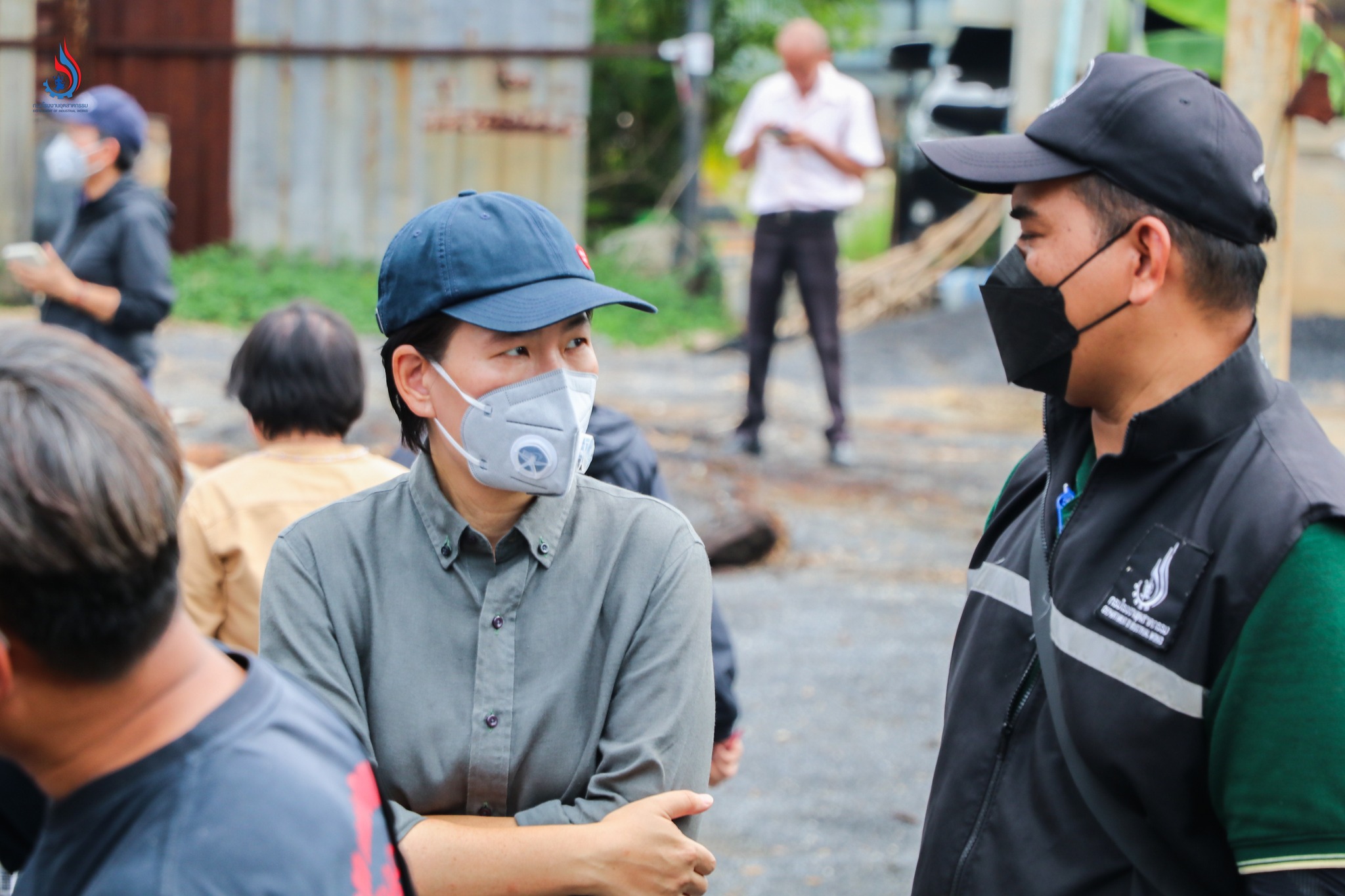
Ms. Thitipat acknowledged the role of local administrative organisations in supporting the work, but currently, their authority is limited. They do not have the authority to regulate factories beyond 100 horsepower, and hazardous waste management requires sophisticated skills and knowledge that are still beyond organisations’ capacities. Ms. Thitipat also addressed close relationships and influences in localities (Kreng Jai in Thai) that can impede legal enforcement.
Currently, local administration authorities can enforce a few lighter acts, including the Public Health Act, to deal with illegal hazardous waste management plants in their areas.
“We wish to decentralise and transfer authority to localities, but at the moment they may not have a body of knowledge and sophistication to deal with the issue (That’s the reason why the current efforts are focused on a provincial level),” said Ms. Thitipat.
Ms. Thitipat also added that the ministry is revising the Hazardous Substance Act, with the introduction of heavier penalties and reclassification and specification of permits, especially 105 and 106 permits. At present, one factory can have several permits depending on its capacity proposed to the department for consideration. A basket-like waste management system and extension at one venue prompts waste management experts to question whether it allows a major loophole for waste management and auditing, as it has happened.
The legal roadmap
Reporting and auditing are other major issue that causes concern for hazardous waste management experts. According to Phitsanu Jarupattanasirikul, a committee of Waste and Environment Institute for Sustainability at the Federation of Thai Industries (FDI), and Director of TARF, a waste management company that cleared 400 tonnes of toxic waste at Aek UThai recycling plant, there would be no need to reclassify or respecify the permits if reporting and auditing were thorough.
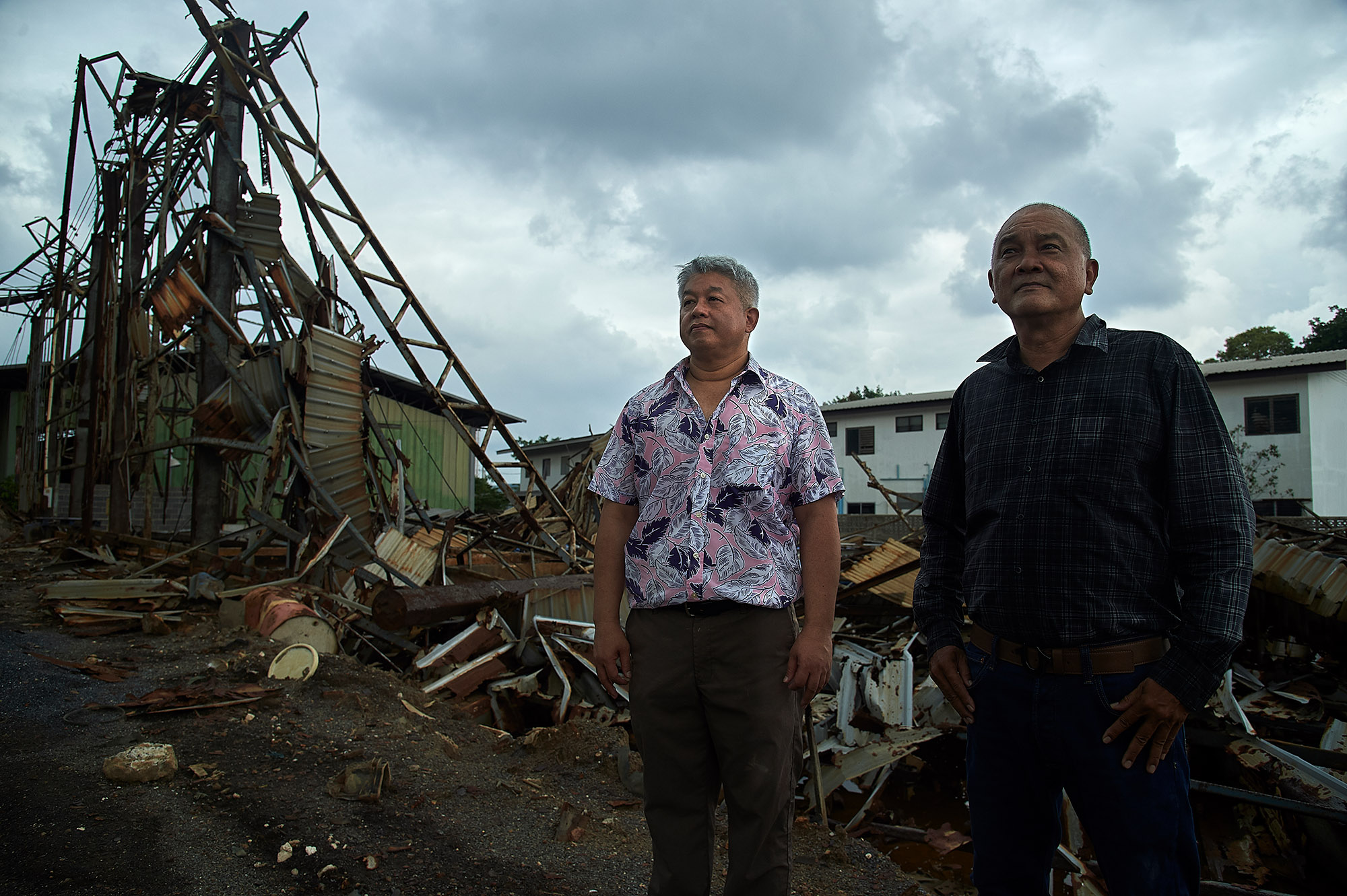
Photo: Sayan Chuenudomsavad
The latest ministerial regulation was issued late last year to fully enforce the Polluter-Pay Principle. It requires waste generators to be held responsible until their waste is completely managed. This new requirement was extended from the previous regulation, which required them to be held responsible until their waste reached waste processors.
They both are also required to report the amount of their waste back to the department’s waste reporting system annually and monthly, respectively, but Mr. Phitsanu said this has not yet completely plugged the loophole that remains as there would be only figures appearing in the system and nobody is assured what final products are after the waste management. This is particularly critical in a recycling process, he remarked.
“You should be able to check what the final products are and where they will end up in a production system, as they have been recycled, right? At this point, it’s not like that, and that’s why we see the claimed amount of waste disappearing as it’s simply dumped somewhere. You ask a student to submit his or her homework, but you have no teachers to check it,” said Mr. Phitsanu, adding that in some developed countries, the responsibility is even set to cover damage done afterwards. It’s known as ultimate liability.
Mr. Phitsanu suggest a new big data of hazardous waste reporting and auditing be put in place, and a new division to focus on the task to help keep the final process in check. Last but not least, the regulators should come up with a roadmap to facilitate the formulation of new laws and regulations rather than being stuck with limitations such as a lack of manpower or system and fixing the bugs at hand. By coming up the the road map, they can go beyond addressing them short term and rather achieve sustained mechanisms to help regulate the hazardous waste management industry more efficiently in the long term, said Mr. Phitsanu.
“You should not say you cannot do this, as you don’t have staff or a system in place. There is never such a thing in place in the first place, but we have to build it up. If we don’t have it in place, we just take a note and draw a road map to get it, that’s all.
“Addressing a challenge for the better future requires foresight. We cannot just fix today’s problems, which will quickly become the past,” said Mr. Phitsanu.
According to the department, there are around 2,500 waste processors holding 101, 105, and 106 permits, and there are more than 65,00 factories, which produce around 1.5 million tonnes of toxic waste, and 17 million tonnes of non-toxic waste a year. According to Mr. Phitsanu, of 2,500 waste processors, based on his knowledge and experience in the industry, there would be only tens of them that are efficient, and the number could be less than ten for those dealing with acidic solvents.
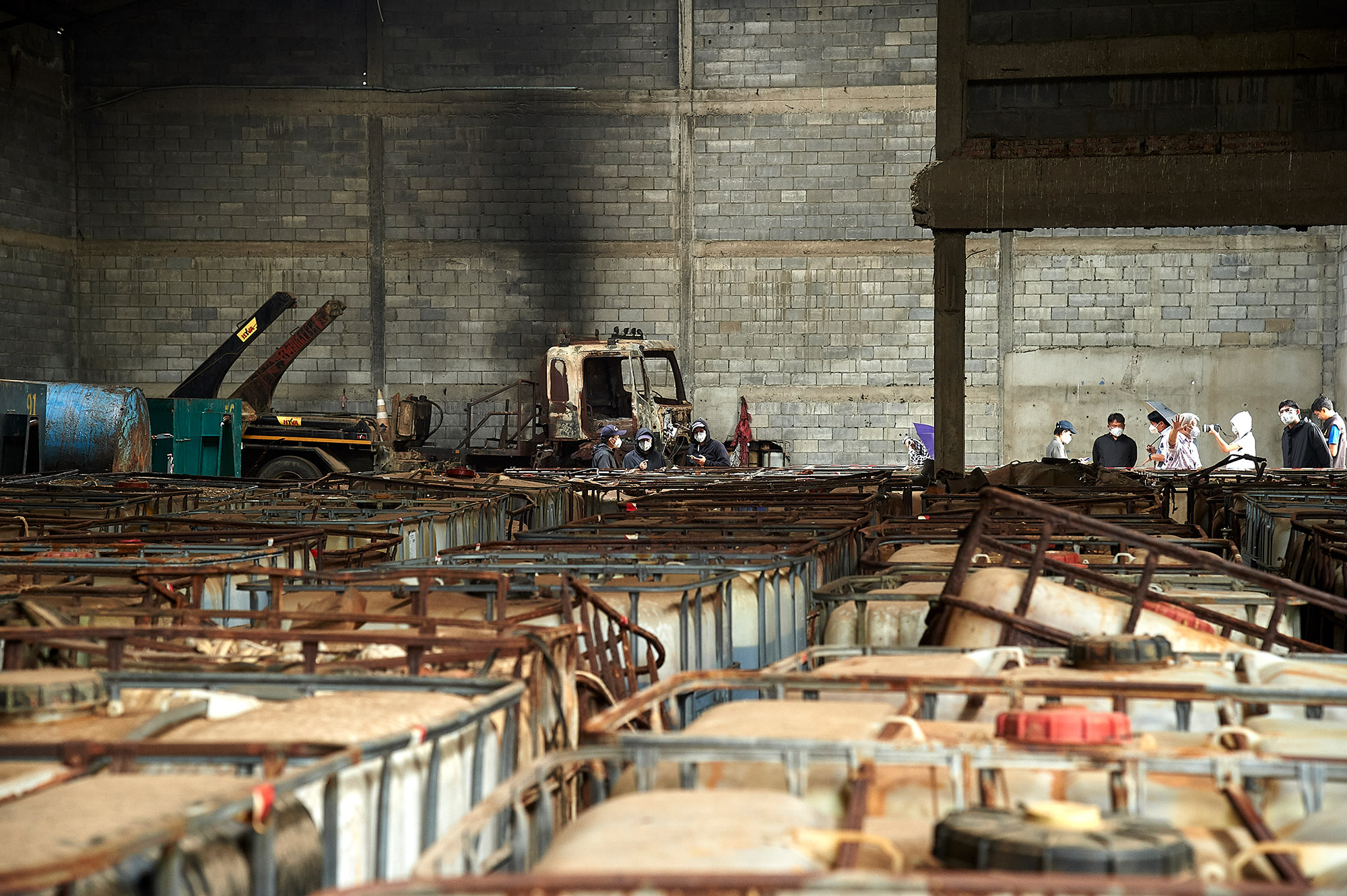


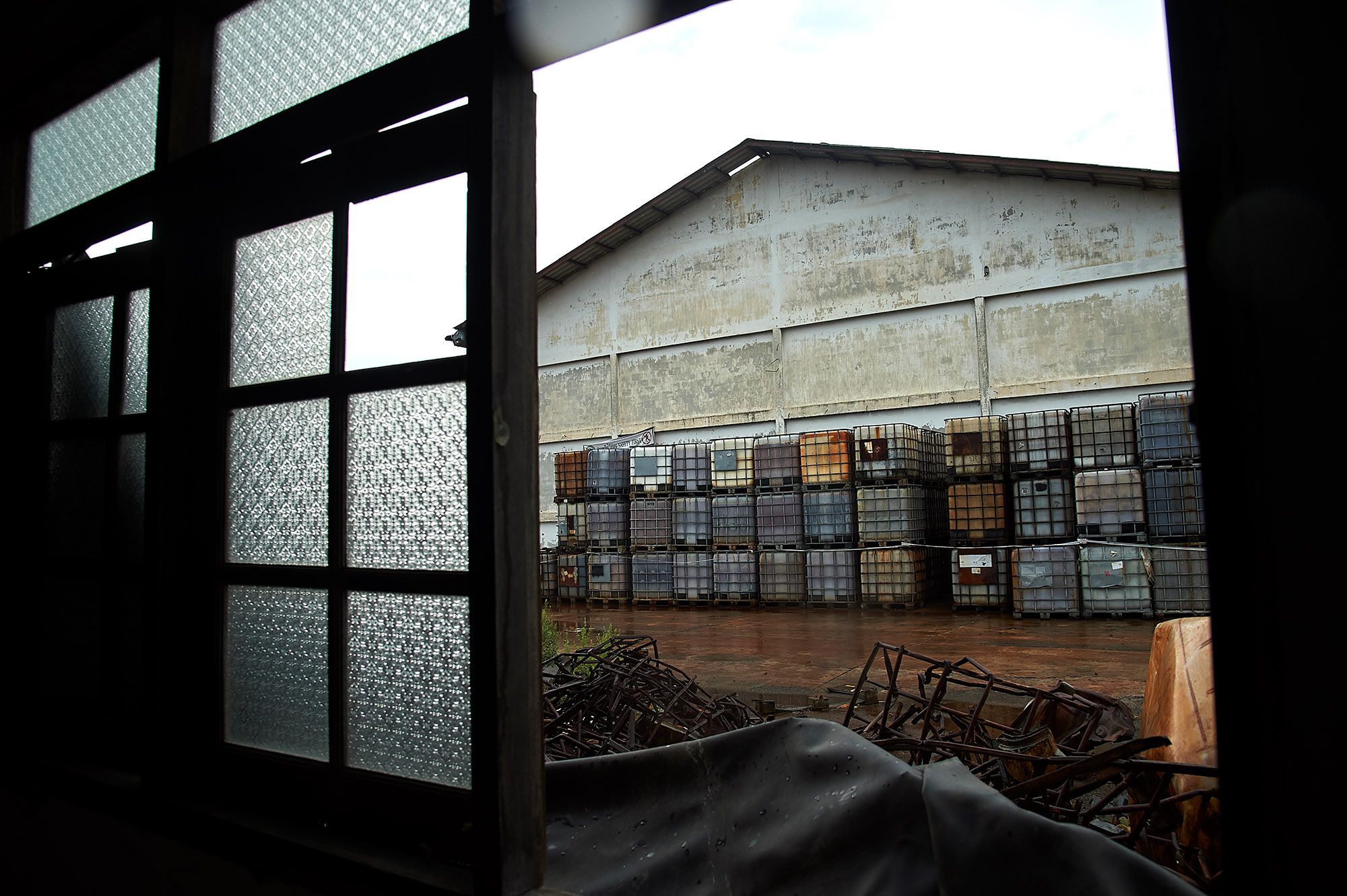
Photos: Sayan Chuenudomsavad
Structural challenge
Mr. Warit, meanwhile, contemplates a structural challenge to the issue. He said issuance of permits for waste management from the start is still much an internal matter of the department, and discretion is extensively applied when considering a permit. This needs to be reduced, and he hopes that reclassification and respecification may be of help.
In addition, the work should be more open and embrace other agencies involved as well as communities so they are able to participate in, as it’s not just about factories’ business, but the environment and local livelihoods that are at stake, he noted.
Based on his research, he has also proposed zoning for hazardous waste management. And the zoning next to industrial estates is among the options, he pointed out, citing that this is a common practice overseas, like in Japan and other countries.
Penchom Saetang, EARTH’s director, said illegal hazardous waste disposal is an environmental crime that will not disappear in a short period, as it’s an organised crime with organised networks. In some cases, es experienced by her organisation, it’s transnational. Ms. Penchom said Aek UThai is an example of the state’s attempt to cut the loop of such a crime and network. More work needs to be done, especially rehabilitation of the damaged environment and people’s livelihoods, which could take years.
She said the role of local communities and organisations is increasingly important as they can help in surveillance over irregularities in their localities.
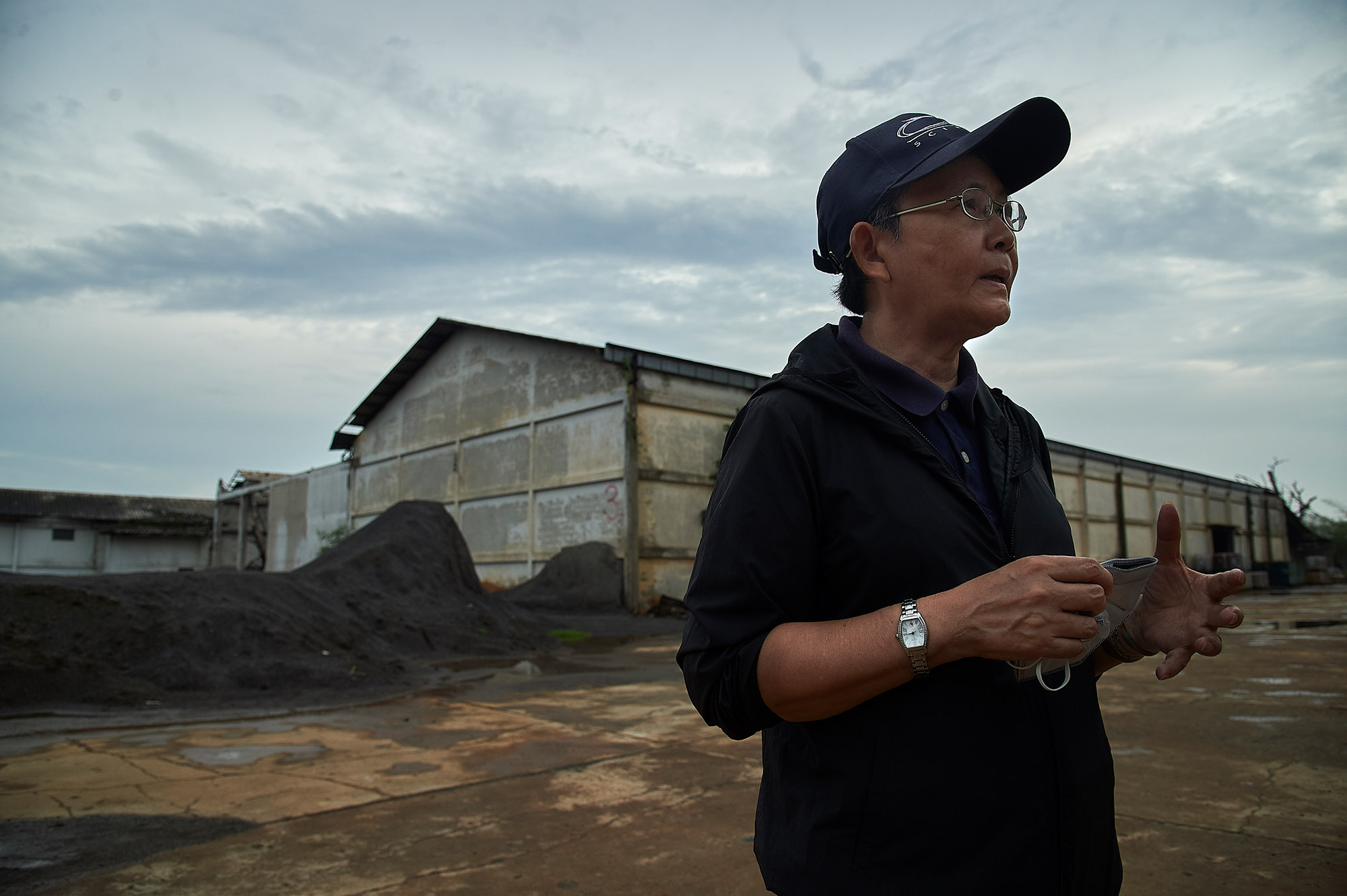
Photo: Sayan Chuenudomsavad
“The ministry should reform its practices because it is difficult to restore once the area is contaminated. There should be supervision and inspection of the conditions of every factory. A long-term plan for factory inspection, aiming in the next 1-3 years to cover all factories nationwide, should be developed. This is for the sake of environmental safety, and it can help prevent risks associated with contamination, as well as the widespread impacts on human health, the environment, and the economy,” said Ms. Penchom.
For Dawan Chantarahassadi, a key leader who ever opposed the Khlong Dan waste treatment project in Samut Prakan for many years and now is an advocate with EARTH, she said: “It’s clear that something is wrong in the Aek UThai case and it needs a major fix, especially rehabilitation of the damaged environment and people’s livelihoods. Externalities (The loss of environmental capital) far outweigh industrial investments when we deal with illegal hazardous waste disposal.”
At Aek UThai’s recycling plant and its warehouses, metal sheets of the roofs become rusty due to the vapours of acidic solvents they stored. Inside the buildings, acidic vapours slowly rise from bulk containers into the air. Some bulk containers broke, sending acidic liquid out and flooding the floors. Outside, the blackish water inundates local residents’ properties and public waterways. What is feared the most is that the toxic water seeps underground and contaminates aquifers and underground water.
From Mr. Warit’s experiences, this takes no longer than five years, and once it reaches the aquifers, it’s extremely hard to rehabilitate, given their locations underground. Mr. Warit just cannot confirm how much time these properties have left before it’s too late.
Also read: Efforts to Clear the “World’s Trash Bin”: Hazardous Waste Challenges in Thailand and beyond
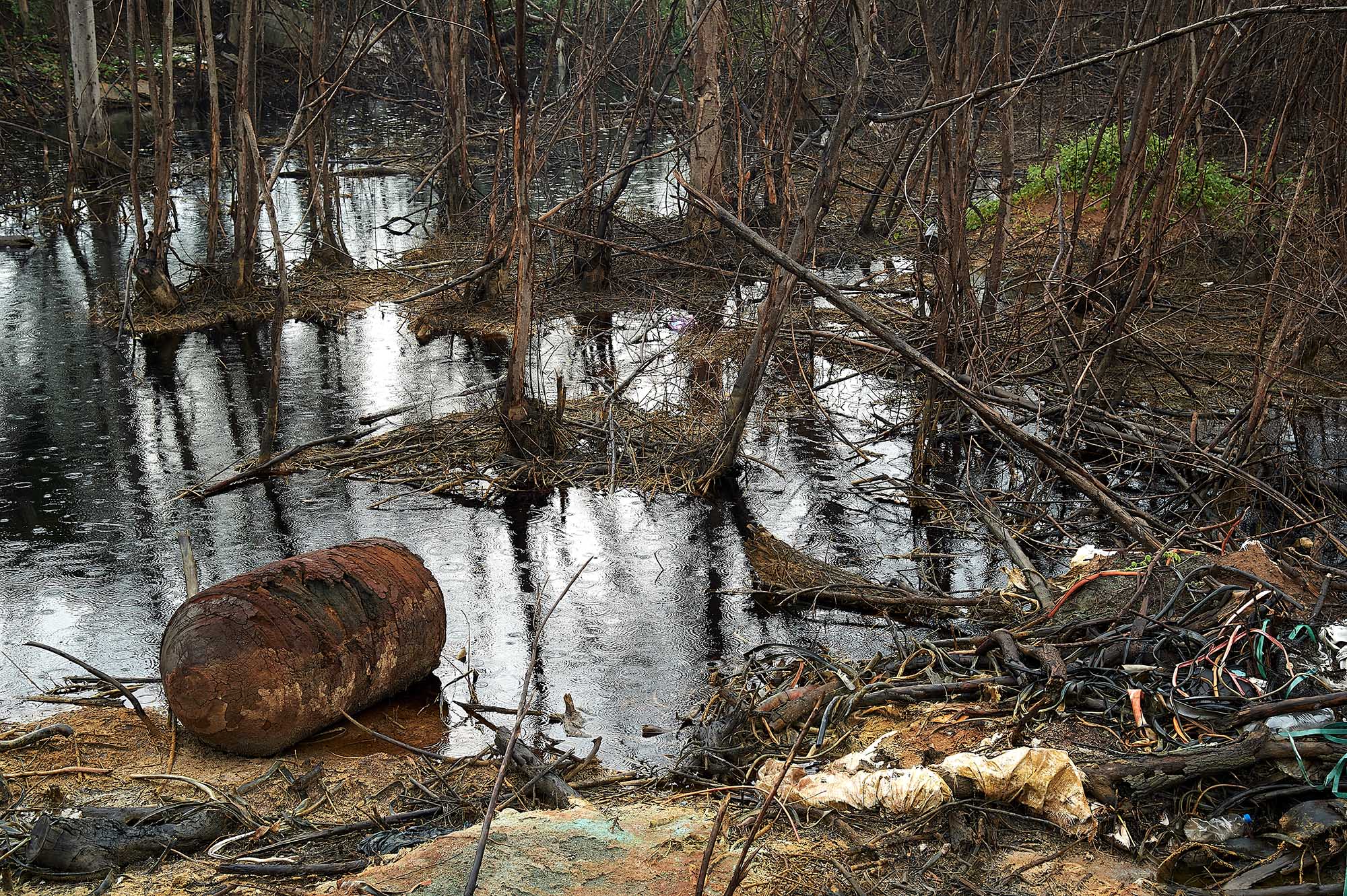
Indie • in-depth online news agency
to “bridge the gap” and “connect the dots” with critical and constructive minds on development and environmental policies in Thailand and the Mekong region; to deliver meaningful messages and create the big picture critical to public understanding and decision-making, thus truly being the public’s critical voice

